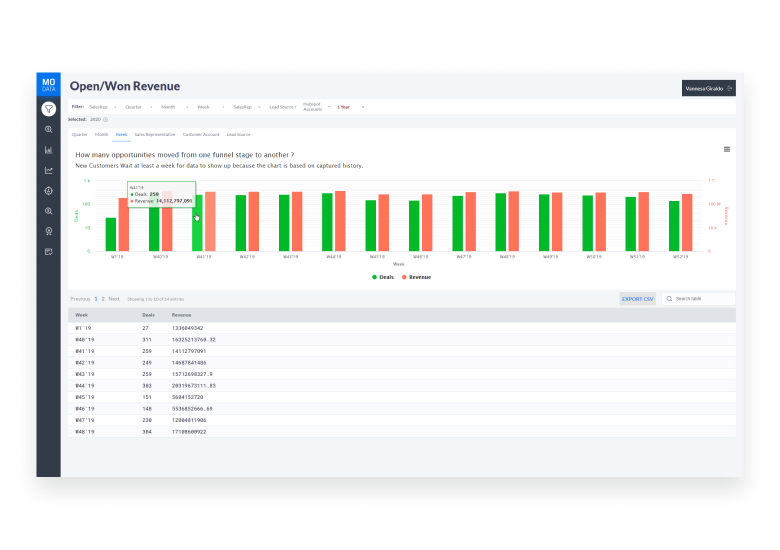
“With great power comes great responsibility”. Few job positions exemplify these words more than a VP of Sales.
Being promoted to VP of Sales comes with great opportunity to exact lasting change in the organization. But you’re also accountable for the results you and your team bring to the table.
Once you get that all-important letter where your boss drops the good news on you, your life changes forever (if you agree to take the job). You enter the big leagues where everything you do can affect the course of the entire company.
At first, you feel nothing. You nod and smile politely. You know you should be happy, but at the very first moments, your mind is still processing the news. The initial shock is immense.
And then it dawns on you – you’re the new VP of Sales. Congratulations! Time to treat your spouse to a fancy dinner so you can celebrate. You call them as the sudden euphoria surges through your brain. This is the moment you’ve been working towards all these years.
Once a bit of time has passed and the euphoria’s faded away, fear begins to set in. How in the world are you going to manage your new role? What are you going to do? Where would you even begin?
Don’t worry – we’re here for you. In this article, we’ll help you nail your first impression as a VP of Sales like a champ. Step by step, we’ll prepare you to:
- Make a great first impression
- Meet everyone on the team individually
- Understand the current state of the organization
- Dive deep into the pipeline
- Set up a meeting with your manager
- Manage expectations
Make a Great First Impression
You don’t get a second chance to make a first impression. That’s why you need to make it count.
First impressions are extremely powerful. They can affect the way people see you for the years to come. It’s very difficult to establish rapport with your team down the line if you don’t lead with a good first impression. And being a capable leader is a part of your job description.
Meet everyone on the team individually
Set up individual meetings with each team member. Most people would be much more comfortable talking to you one-on-one instead of in a group setting. While group meetings are a great way of gauging the team’s dynamics, in the beginning you want to get a feel for each team member individually. This will help set up expectations.
At this point, you’re still gathering intelligence. You don’t want to start making changes during your first few days. Right now, all you need to do is assess the current state of affairs.
Show people you care about their needs and convince them you take your new role seriously. If you’re an outside hire (meaning you weren’t promoted from within), then it’s critical that you figure out what drives people and understand their values. This will help you motivate your team better and will leave a great first impression.
Understand the Current State of the Organization
As a VP of Sales, one of the first things you need to ensure is that leads are properly tagged and documented on the way in. You can’t optimize the sales process if you don’t know where leads are coming from and how they’re handled.
Are leads getting in properly tagged? If so, what happens to them once they enter the pipeline? Answer as many of these questions as you can.
Who works the leads? Do they get where they’re supposed to? Are they properly qualified? If the systems to tag these leads don’t exist, you need to create them as soon as possible.
How many of the leads convert across each stage? What happens to the leads that don’t convert? Exploring this side of the process will allow you to identify weaknesses in the pipeline.

How can you increase the win rate? This expands on the previous questions. At this point, you’re merely making observations and forming hypotheses. You’re not implementing serious changes.
Data can help you analyze the sales funnel from top to bottom. Check out the metrics you’re measuring. Data will help you put things into perspective and quantify the pipeline. In turn, you’ll be able to see the full picture more clearly.
Dive deep into the pipeline
Once you have a proper understanding of the organization’s process, it’s time to dive into the pipeline. Very few organizations keep a healthy pipeline. One of your first jobs as the new VP of Sales would be to clean up the pipeline. Few things would leave a better impression than this.
It sounds like a Herculean task, so where do you start? Take a look at the average time it takes for a closed won. Then analyze all the deals in the pipeline and look at their age.
If your average closed won is 30 days, your average closed lost is 60, and half the deals in your pipeline have been sitting there for over 90 days, you have a problem. Those are some serious red flags. It means the pipeline needs clearing from stalled deals. It also means reps are chasing deals for longer than they should, with a low probability of closing them.
Fixing these issues in the beginning is a sure way to leave a great first impression. However, you need to tread lightly. No one wants to hear, “Your pipeline is trash” from their new boss. Your job is not to be popular, but a little bit of tact never hurt anyone. Instead, you could frame it as “at risk”. The deals you think have a low probability to close are “at risk”.
Having a clear picture about the actual state of the pipeline will enable you to create realistic expectations. If there’s 10 million in pipeline, but more than half of it is stalled deals, then you have a lot less to work with than it may seem at the first glance. And your boss should be aware of that. Speaking of which…
Set up a Meetings with Your Manager
As a VP of Sales, you’re in a leadership position. Therefore, you need to be proactive. Setting up an initial meeting with your manager (CEO, founder, etc.) is going to be one of your most important tasks over your first few days.
It’s important to get on the same page with them as soon as possible. Ask lots of questions during the meeting so you can see where they’re coming from. Ideally, you want to know if there’s something specific they want you to do or focus on. Are there any fires that need to be extinguished, so to speak? If there’s something, you need to know about it. Otherwise, you might focus your efforts in the wrong direction.
Founders and CEOs often have unrealistic expectations of what you can achieve. This is especially true of founders. In their mind, if they managed to grow the organization enough to need a VP of Sales without having any sales experience, then surely you can 10x that.
This is not realistic. You’re not a miracle worker and you should be upfront about it. Be honest about what you think is possible and what isn’t. And remember – if you’re going to give promise, also explain how you’re planning on achieving them.
How to manage expectations
Data will be extremely important for setting up proper expectations. Prepare all the relevant data and review it before the meeting. While you still don’t know the ins and outs of the organization, you should already have a pretty good idea about the current performance based on the numbers. You should already know the pipeline. You should be able to defend your case.
Much as you’d rather make big promises and talk about the changes you’re planning on making, don’t. Instead, walk the founder through the process you’re planning and how you’re going to handle things in the next 30, 60, and 90 days. Be transparent.
The first 30 days will be all about learning. You’re going to learn about the product, the organization, the people, marketing, etc. As a result, you’ll gain a deep understanding of the organization’s inner workings.
The next 30 days will be all about observing the action. You’ll be joining calls and demos, while letting the reps do all the talking. Maybe you’ll do small changes here and there, but they won’t be organization-level changes. Just best practices while you’re still getting to know the process.
Finally, during your third 30 days, you’ll start coaching people and introducing your own process and making changes. At this point, you will have gained a deep insight into everything you need to know about the organization, people, process, product, marketing, etc. You’ll know what works and what doesn’t. And you’ll be able to start fixing problems, identifying funnel leakage, coaching reps, and more.
You can use data to back all of this up. By the end of the meeting, you should have been able to set up proper expectations.
Try to get this meeting within your first 15 days.
Conclusion
Your first few days as a VP of Sales are going to be extremely busy if you want to nail your first impression. However, if you’re proactive enough, carefully study the pipeline, get to know your team, and set up proper expectations, you’ll be well on your way to conquering the next steps of your journey.




